Growing Napa Cabbage might seem intimidating, but trust me, it’s a rewarding experience that brings fresh, crisp flavor right to your kitchen! Have you ever dreamt of strolling through your own backyard, harvesting vibrant Napa cabbage heads for a delicious stir-fry or a tangy kimchi batch? Well, dream no more! This DIY guide is your key to unlocking the secrets of successfully cultivating this versatile vegetable, even if you’re a complete beginner.
Napa cabbage, also known as Chinese cabbage, boasts a rich history deeply rooted in Asian cuisine. For centuries, it has been a staple ingredient, prized for its delicate taste and nutritional benefits. From traditional kimchi recipes passed down through generations to modern culinary creations, Napa cabbage has consistently proven its worth. But why rely solely on store-bought options when you can enjoy the satisfaction of growing Napa Cabbage yourself?
In today’s world, where we’re increasingly conscious of food sources and sustainability, knowing how to grow your own produce is more important than ever. Plus, let’s be honest, store-bought vegetables often lack the freshness and flavor of homegrown ones. This DIY guide will equip you with simple yet effective tricks and hacks to overcome common challenges and ensure a bountiful harvest. Imagine the pride you’ll feel serving a meal featuring Napa cabbage you nurtured from seed to table! So, let’s dive in and discover the joy of growing your own delicious Napa cabbage!
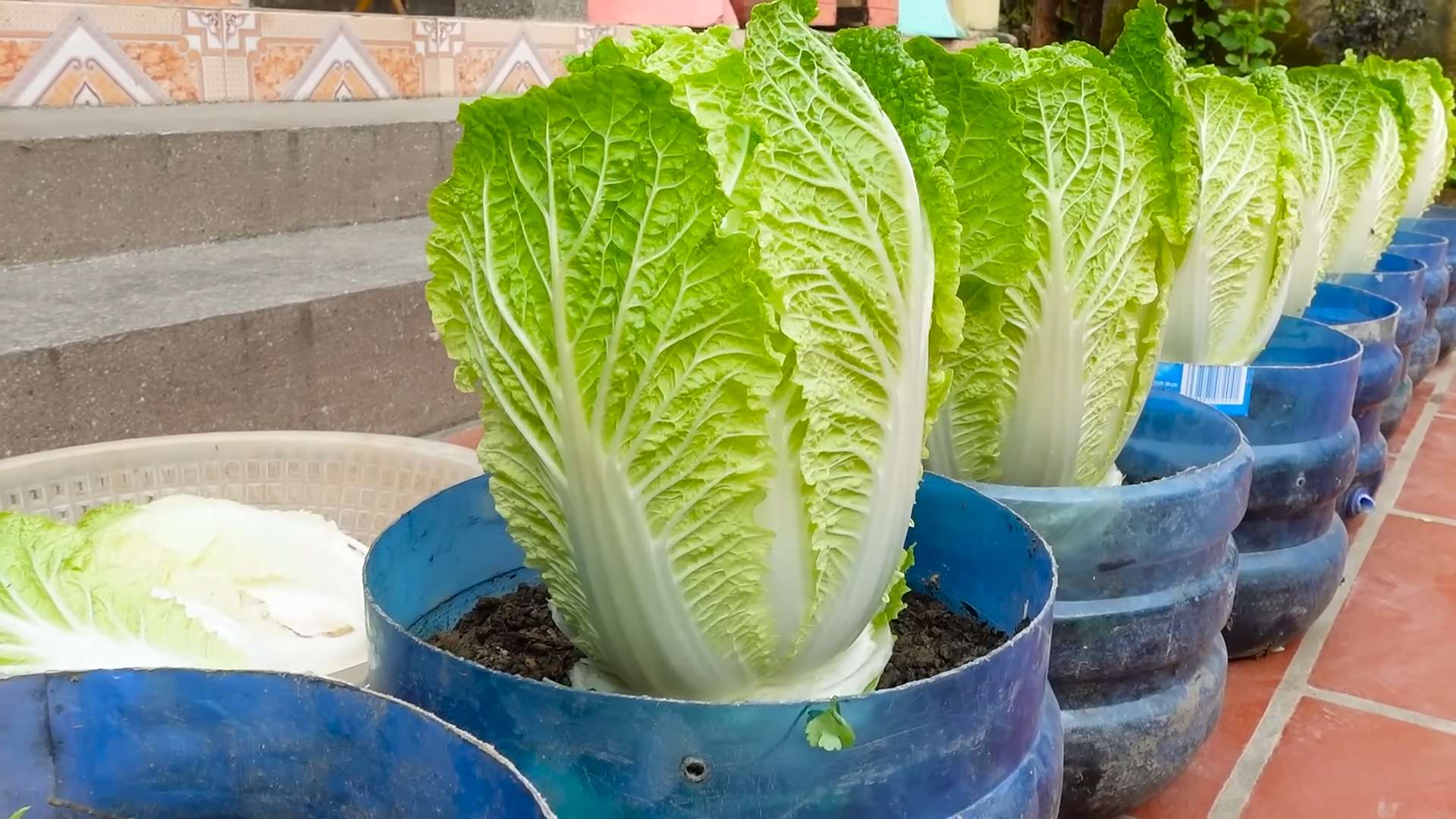
Growing Napa Cabbage: A DIY Guide from Seed to Harvest
Okay, cabbage lovers! Let’s dive into the wonderful world of growing Napa cabbage right in your own backyard. I’m going to walk you through every step, from starting seeds to harvesting your delicious, crunchy bounty. Get ready to enjoy fresh, homegrown Napa cabbage in your favorite stir-fries, salads, and slaws!
Choosing the Right Variety and Timing
Before we get our hands dirty, let’s talk about variety and timing. Napa cabbage is a cool-season crop, meaning it thrives in cooler temperatures. Planting at the right time is crucial to avoid bolting (going to seed prematurely) due to heat.
* Variety Selection: Look for varieties that are known for their disease resistance and suitability to your local climate. Some popular choices include ‘Blues’, ‘China Pride’, and ‘Optiko’. I personally love ‘Blues’ because it’s reliable and produces nice, tight heads.
* Timing is Key: Napa cabbage is best grown in the spring or fall. For a spring crop, start seeds indoors 4-6 weeks before the last expected frost. For a fall crop, direct sow seeds in the garden 8-10 weeks before the first expected frost. Check your local frost dates to determine the best planting time for your area. I usually start my fall crop in late July or early August.
Starting Seeds Indoors (Optional but Recommended)
Starting seeds indoors gives you a head start and allows you to control the growing environment. Here’s how I do it:
1. Gather Your Supplies: You’ll need seed starting trays or small pots, seed starting mix (a light, sterile mix is essential), Napa cabbage seeds, a spray bottle, and a grow light (optional but highly recommended).
2. Sow the Seeds: Fill your seed starting trays or pots with seed starting mix. Moisten the mix thoroughly with the spray bottle. Sow 2-3 seeds per cell or pot, about ¼ inch deep. Gently cover the seeds with more mix.
3. Provide Warmth and Light: Place the trays or pots in a warm location (around 65-75°F or 18-24°C). If you’re using a grow light, position it a few inches above the trays and keep it on for 14-16 hours per day. If you don’t have a grow light, place the trays in a sunny window, but be aware that the seedlings may become leggy (tall and spindly) without sufficient light.
4. Keep the Soil Moist: Use the spray bottle to keep the soil consistently moist, but not soggy. Overwatering can lead to damping-off, a fungal disease that can kill seedlings.
5. Thin the Seedlings: Once the seedlings have emerged and have a couple of true leaves (the second set of leaves that appear), thin them to one seedling per cell or pot. Choose the strongest, healthiest-looking seedling and snip off the others at the soil line. Don’t pull them out, as this can disturb the roots of the remaining seedling.
Preparing the Garden Bed
While your seedlings are growing indoors (or if you’re direct sowing), it’s time to prepare the garden bed. Napa cabbage needs well-drained, fertile soil with a pH of 6.0-7.5.
1. Choose a Sunny Location: Napa cabbage needs at least 6 hours of sunlight per day.
2. Amend the Soil: Dig in plenty of compost or well-rotted manure to improve soil fertility and drainage. I like to add a generous amount of compost – at least 2-3 inches – to my cabbage bed.
3. Test the Soil pH: If you’re unsure about your soil pH, use a soil testing kit to check it. If the pH is too low (acidic), add lime to raise it. If it’s too high (alkaline), add sulfur to lower it.
4. Create Raised Beds (Optional): Raised beds can improve drainage and warm up the soil more quickly in the spring. If you have heavy clay soil, raised beds are especially beneficial.
5. Remove Weeds: Thoroughly remove any weeds from the garden bed. Weeds compete with cabbage for nutrients and water.
Transplanting Seedlings (or Direct Sowing)
Now comes the exciting part – getting those cabbage plants into the ground!
Transplanting Seedlings:
1. Harden Off the Seedlings: Before transplanting, you need to harden off the seedlings to acclimate them to outdoor conditions. Gradually expose them to longer periods of outdoor sunlight and cooler temperatures over a period of 7-10 days. Start by placing them in a sheltered location for a few hours each day, and gradually increase the time and exposure.
2. Planting Time: Transplant the seedlings when they are 4-6 weeks old and have 4-6 true leaves. Choose a cloudy day or late afternoon to minimize transplant shock.
3. Spacing: Space the seedlings 12-18 inches apart in rows that are 24-36 inches apart. This gives them enough room to grow and develop full heads.
4. Planting Depth: Dig a hole that is slightly larger than the root ball of the seedling. Gently remove the seedling from its cell or pot and place it in the hole. Make sure the top of the root ball is level with the soil surface.
5. Water Thoroughly: Water the seedlings thoroughly after transplanting. This helps to settle the soil around the roots and reduces transplant shock.
Direct Sowing:
1. Sowing Depth: Sow the seeds about ½ inch deep.
2. Spacing: Sow the seeds 2-3 inches apart. Once the seedlings emerge, thin them to 12-18 inches apart.
3. Watering: Keep the soil consistently moist until the seedlings emerge.
4. Protection: Consider using row covers to protect the seedlings from pests and extreme weather.
Caring for Your Napa Cabbage
Once your cabbage plants are in the ground, it’s important to provide them with proper care to ensure a successful harvest.
1. Watering: Napa cabbage needs consistent moisture, especially during head formation. Water deeply and regularly, especially during dry periods. Aim for about 1-1.5 inches of water per week. I like to use a soaker hose to water my cabbage plants, as this delivers water directly to the roots and minimizes water loss through evaporation.
2. Fertilizing: Napa cabbage is a heavy feeder, so it benefits from regular fertilization. Apply a balanced fertilizer (such as 10-10-10) according to the package directions. You can also side-dress the plants with compost or well-rotted manure every few weeks.
3. Weeding: Keep the garden bed free of weeds. Weeds compete with cabbage for nutrients and water. Hand-pull weeds regularly or use a hoe to cultivate the soil.
4. Mulching: Apply a layer of mulch around the cabbage plants to help retain moisture, suppress weeds, and regulate soil temperature. Straw, shredded leaves, or wood chips are all good choices for mulch.
5. Pest and Disease Control: Napa cabbage is susceptible to several pests and diseases, including cabbage worms, aphids, flea beetles, and clubroot.
* Cabbage Worms: These green caterpillars can quickly devour cabbage leaves. Handpick them off the plants or use Bacillus thuringiensis (Bt), a biological insecticide that is safe for humans and pets.
* Aphids: These small, sap-sucking insects can weaken cabbage plants. Spray them off with a strong stream of water or use insecticidal soap.
* Flea Beetles: These tiny beetles can create small holes in cabbage leaves. Use row covers to protect the plants or spray them with neem oil.
* Clubroot: This soilborne disease causes swollen, distorted roots and stunted growth. Prevent clubroot by practicing crop rotation, maintaining a soil pH of 7.0 or higher, and using disease-resistant varieties.
Harvesting Your Napa Cabbage
The moment you’ve been waiting for! It’s time to harvest your Napa cabbage.
1. Harvest Time: Napa cabbage is typically ready to harvest 70-80 days after planting. The heads should be firm and tightly packed.
2. Harvesting Technique: Use a sharp knife to cut the head of cabbage from the stem at the base of the plant.
3. Storage: Store Napa cabbage in the refrigerator for up to 2 weeks. Wrap the head in plastic wrap or place it in a plastic bag to prevent it from drying out.
Troubleshooting
Even with the best care, you may encounter some problems while growing Napa cabbage. Here are a few common issues and how to address them:
* Bolting (Premature Seed Production): This is often caused by heat stress. Plant at the right time of year and provide shade during hot weather.
*
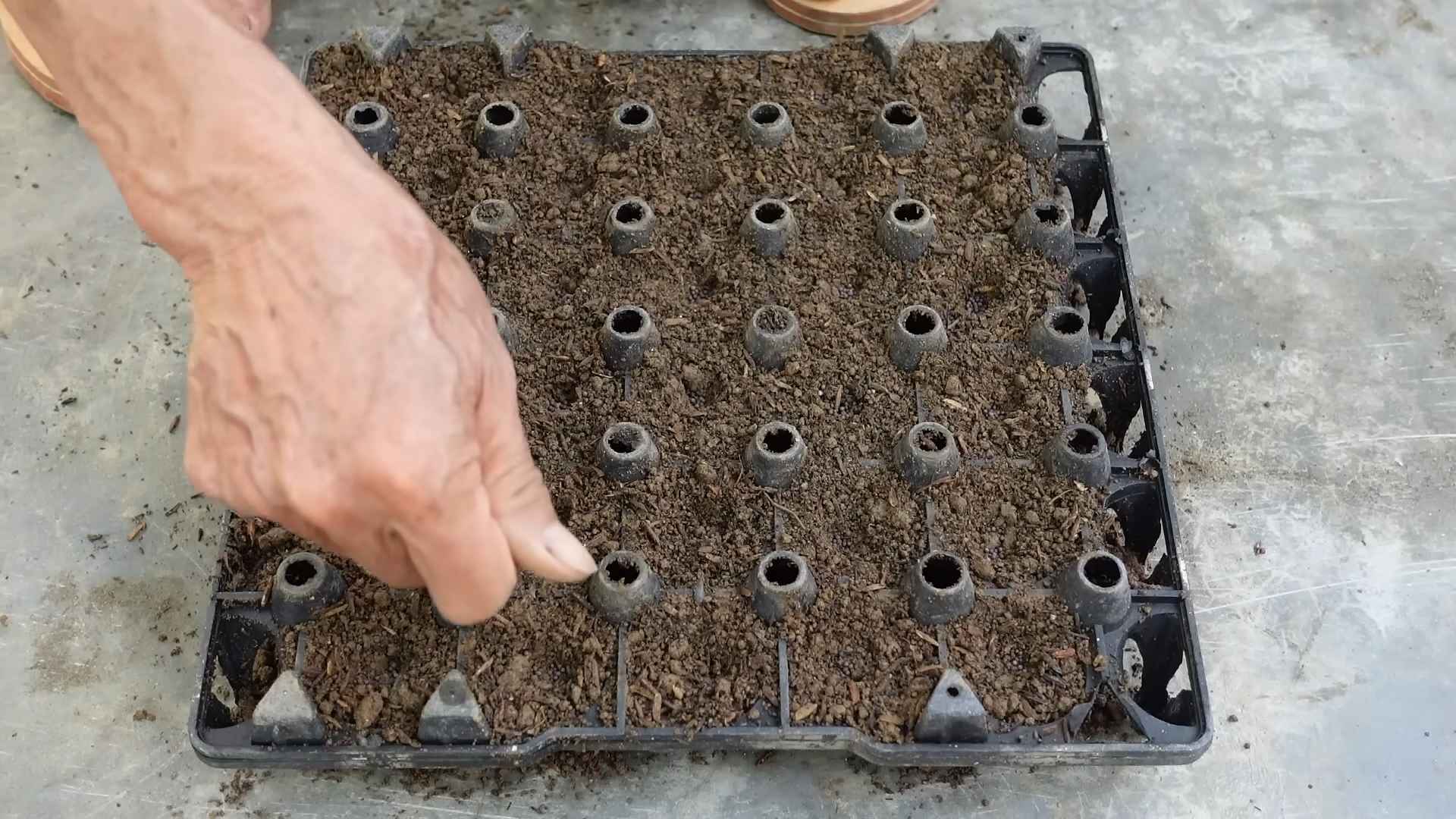
Conclusion
So, there you have it! Growing Napa cabbage at home, while it might seem daunting at first, is an incredibly rewarding experience. Not only do you get to enjoy the freshest, most flavorful Napa cabbage imaginable, but you also gain a deeper appreciation for the food you eat and the process of bringing it from seed to table. This DIY trick, focusing on [specific trick mentioned in the article, e.g., soil preparation, pest control, or watering technique], is a game-changer because it directly addresses [the problem the trick solves, e.g., common nutrient deficiencies, pest infestations, or inconsistent growth] that often plague home gardeners.
Think about it: no more wilted, bitter Napa cabbage from the grocery store. Instead, imagine crisp, sweet leaves perfect for stir-fries, slaws, kimchi, or even just a simple salad. The difference in taste and texture is truly remarkable. Plus, you have complete control over what goes into your cabbage – no harmful pesticides or herbicides necessary!
But the benefits don’t stop there. Growing your own Napa cabbage is also a fantastic way to connect with nature, relieve stress, and even save money. It’s a project that the whole family can enjoy, and it’s a great way to teach children about where their food comes from.
Ready to take your Napa cabbage game to the next level?
Here are a few suggestions and variations to consider:
* Succession Planting: Plant new seeds every few weeks to ensure a continuous harvest throughout the growing season. This is especially useful if you enjoy Napa cabbage regularly.
* Companion Planting: Plant your Napa cabbage alongside beneficial companions like dill, chamomile, or rosemary. These herbs can help deter pests and attract beneficial insects.
* Variety Selection: Experiment with different varieties of Napa cabbage to find your favorite. Some varieties are more heat-tolerant, while others are better suited for cooler climates. Consider ‘Blues’, ‘Optiko’, or ‘China Express’ for different growing conditions.
* Fermentation Fun: Once you’ve harvested your Napa cabbage, try your hand at making homemade kimchi! It’s a delicious and healthy way to preserve your harvest and enjoy the unique flavors of fermented vegetables.
* Soil Amendments: While the DIY trick focuses on [specific trick], don’t neglect other aspects of soil health. Consider adding compost, aged manure, or other organic matter to further enrich the soil and provide your Napa cabbage with the nutrients it needs to thrive.
We are confident that this DIY trick will significantly improve your success in growing Napa cabbage. Don’t be afraid to experiment and adapt the techniques to suit your specific growing conditions. Remember, gardening is a journey, and there’s always something new to learn.
So, what are you waiting for? Grab your seeds, prepare your soil, and get ready to enjoy the delicious rewards of growing your own Napa cabbage. We encourage you to try this DIY trick and share your experiences with us! Let us know how it works for you, what challenges you encounter, and any tips or tricks you discover along the way. Your feedback will help other gardeners succeed and contribute to a thriving community of Napa cabbage enthusiasts. Happy gardening!
Frequently Asked Questions (FAQ)
What is the best time of year to plant Napa cabbage?
The ideal time to plant Napa cabbage depends on your climate. In general, it’s best to plant it in the spring or fall, avoiding the hottest months of summer. Napa cabbage is a cool-season crop that thrives in temperatures between 60°F and 70°F (15°C and 21°C). For a spring crop, start seeds indoors 4-6 weeks before the last expected frost. For a fall crop, direct sow seeds in the garden 6-8 weeks before the first expected frost. Check your local frost dates to determine the best planting time for your region.
How much sunlight does Napa cabbage need?
Napa cabbage requires at least 6 hours of direct sunlight per day to grow properly. Choose a planting location that receives plenty of sunlight throughout the day. If you live in a particularly hot climate, some afternoon shade may be beneficial to prevent the leaves from scorching.
What kind of soil is best for growing Napa cabbage?
Napa cabbage prefers well-drained, fertile soil that is rich in organic matter. The ideal soil pH is between 6.0 and 7.5. Before planting, amend the soil with compost, aged manure, or other organic matter to improve its fertility and drainage. The DIY trick mentioned earlier likely focuses on a specific aspect of soil preparation, so be sure to follow those instructions carefully.
How often should I water Napa cabbage?
Napa cabbage needs consistent moisture to thrive. Water deeply and regularly, especially during dry periods. Aim to keep the soil consistently moist but not waterlogged. A good rule of thumb is to water when the top inch of soil feels dry to the touch. Mulching around the plants can help retain moisture and suppress weeds.
What are some common pests and diseases that affect Napa cabbage?
Napa cabbage is susceptible to several pests and diseases, including cabbage worms, aphids, flea beetles, clubroot, and black rot. Regularly inspect your plants for signs of infestation or disease. Use organic pest control methods, such as handpicking pests, using insecticidal soap, or applying Bacillus thuringiensis (Bt) for cabbage worms. To prevent diseases, practice crop rotation, ensure good air circulation, and avoid overhead watering.
How do I harvest Napa cabbage?
Napa cabbage is ready to harvest when the head is firm and tightly packed. The exact time to harvest will depend on the variety and growing conditions, but generally, it takes about 70-80 days from planting to harvest. To harvest, simply cut the head off at the base with a sharp knife.
Can I grow Napa cabbage in containers?
Yes, you can grow Napa cabbage in containers, but you’ll need to choose a large container that is at least 12 inches deep and wide. Use a well-draining potting mix and provide regular watering and fertilization. Container-grown Napa cabbage may require more frequent watering than those grown in the ground.
How do I store Napa cabbage?
Napa cabbage can be stored in the refrigerator for several weeks. Wrap the head in plastic wrap or store it in a plastic bag to prevent it from drying out. You can also ferment Napa cabbage to make kimchi, which can be stored for several months.
What are some ways to use Napa cabbage in cooking?
Napa cabbage is a versatile vegetable that can be used in a variety of dishes. It can be eaten raw in salads or slaws, stir-fried, steamed, or added to soups and stews. It’s also a key ingredient in kimchi, a traditional Korean fermented dish. The mild flavor of Napa cabbage makes it a great addition to many different cuisines.
What if my Napa cabbage bolts (goes to seed)?
Bolting is when a plant prematurely flowers and produces seeds, often making the leaves bitter. This can happen if Napa cabbage is exposed to prolonged periods of cold weather or stress. If your Napa cabbage bolts, it’s best to harvest it immediately, even if the head isn’t fully formed. While the leaves may be slightly bitter, they are still edible. To prevent bolting, choose heat-tolerant varieties and avoid planting too early in the spring.

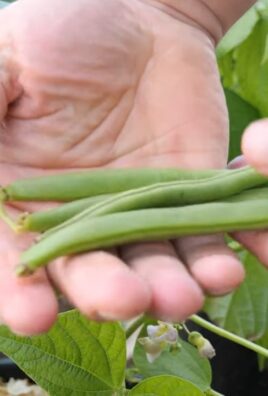
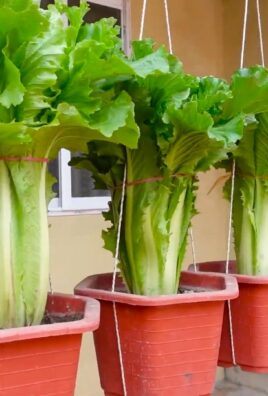
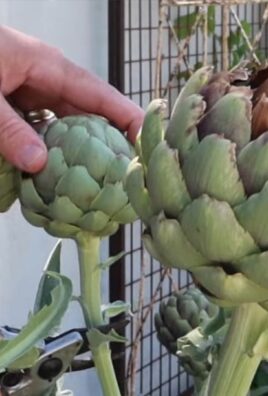
Leave a Comment